Yahoo! News
Can Phoenix, the hottest city in America, survive climate change?
David Knowles, Senior Editor – July 2, 2022
PHOENIX — On the downtown streets in America’s hottest city the temperature has hit 109 degrees Fahrenheit. It’s 1 o’clock in the afternoon in late June and the sidewalks are mostly empty, but an elderly woman carrying an umbrella passes by walking her terrier, the dog’s tiny feet fitted with leather moccasins to protect them from the scorching concrete.
Inside an air-conditioned conference room on the 11th floor of the building that houses city hall, Mayor Kate Gallego is recounting the story of her parents abandoning Chicago for the Southwest following the blizzard of 1979. “Cars buried in snow. Trying to navigate the city was a real challenge,” she told Yahoo News.
A Democrat who was appointed to her first mayoral term in 2019 at the age of 37 after her predecessor was elected to Congress, Gallego was raised in Albuquerque. Like many in her generation, she suffers from asthma, a condition made worse by the air pollution causing climate change, and which she credits for her early interest in the environment. As she grew up, temperatures across the Southwest grew noticeably hotter during her childhood, she said, until global warming was all but impossible to ignore.
“There was a radio station whose number was 97.3, and they would give away money every time we hit 97 degrees,” she said. “It did feel like when they started the promotion it was unlikely to happen, and then it became more and more frequent.”
In Phoenix, where summer can feel a bit like living through a science experiment or a dystopian dare, the average summertime temperature has risen by 3.8 degrees since 1970, according to data compiled by Climate Central, a nonprofit composed of scientists and journalists. The city now averages 111 annual days of triple-digit heat, and experiences 12 more days above 110 degrees Fahrenheit each year than it did in 1970.
Nighttime temperatures have risen even faster, climbing 5.7 degrees since 1970. The average summertime low now stands at 84 degrees Fahrenheit, depriving those without adequate air-conditioning the chance for the body to cool down before the mercury begins rising each morning with the sun.
“In about a decade, we have seen a sea change in the attitudes” among residents formerly skeptical that humans are causing climate change, said Gallego, who earned an undergraduate degree in environmental studies from Harvard University before getting a master’s degree in business administration from the Wharton School of the University of Pennsylvania. Now, she adds, they “would like elected officials to do something.”
Because of the undeniable rise in temperatures, it has become a cliché to say that Phoenix’s climate change future is already here. That way of looking at the problem, however, risks downplaying what’s still to come. By the year 2100, climate models predict, summer highs are expected to rise on average by as much as 10 degrees in the city, which means daily temperature readings of 114 degrees Fahrenheit, which will almost certainly lead to more heat-related deaths.
Since 2014, deaths attributed to heat in Maricopa County — which includes Phoenix and adjacent cities like Mesa, Scottsdale and Tempe — have spiked by 454%, KPNX News reported. For the past two years, the county has set new heat death records, with 323 people killed in 2020 and 331 in 2021, the bulk of those occurring in Phoenix.
Yet people continue to flock to the so-called Valley of the Sun. Between 2010 and 2020, Phoenix grew faster than any other big American city, according to Census Bureau data, adding 163,000 residents.
“Across the United States we are seeing a migration toward sun,” Gallego said. “People are moving toward Sunbelt states. That means having a conversation about how we allocate resources.”
To help lead that conversation, Gallego hired Arizona State University professor David Hondula to head up the city’s newly created Office of Heat Response and Mitigation, the first of its kind in the U.S.
In his first eight months on the job, Hondula, who at 37 bears a passing resemblance to former Phoenix Suns point guard Steve Nash, has put forth a “heat response” strategy. It focuses on reducing heat-related death and illness through measures such as opening air-conditioned cooling centers across the city where people can escape the oven-like summer conditions, launching a hotline residents can call to arrange transportation to get them to one, and sending out volunteers to pass out reusable water bottles.
It’s intuitive that climate change disproportionately impacts those who don’t have the resources to afford rent, let alone air-conditioning or private means of transportation. In his new role, Hondula has spent a lot of time confirming that fact, meeting with poor and unsheltered residents and seeing firsthand how direct intervention can help save lives.
“I might have had more education in the past eight months about the heat problem than I’ve had for eight years working on the problem from an academic standpoint,” he said. “There are folks for whom heat is an inconvenience. Folks for whom heat is a manageable problem, and folks for whom heat is a catastrophe.”
Life and death in ‘the zone’
In Phoenix, catastrophe is a fixture of daily life in “the zone,” a grim homeless encampment near downtown that spans several treeless blocks. With a by-now-familiar mixture of desperation, drug and alcohol abuse, violence and mental illness, the zone resembles similar tent outposts that have popped up in cities across the West, but the Phoenix heat adds another layer of misery. Roughly two-thirds of heat-related deaths in the city over the last two years were among the homeless, and Hondula is keenly aware that if the city continues to break heat-death records, his job may be in jeopardy.
“We better be doing something that moves those numbers in the other direction as soon as possible,” he said.
That may prove easier said than done given that Phoenix has one of the highest eviction rates in the country, apartment and home rental prices continue to soar, and homelessness has risen by 35% in Maricopa County over the last two years. Hondula is realistic about the challenges but remains optimistic that the city can address the problem, noting that heat-related calls to the Phoenix fire department are running 5% lower than the volume experienced at this time last year.
“When we showed up at Cortez Park the other day,” Hondula recounted about a recent outing, “and within a minute of pulling in the parking lot, we’re getting our water bottles set up, the homelessness case manager noticed a bunch of folks crowded around this old Suburban — a family of 10 living out of their car. By the time we had finished our outreach shift, they were on their way to a shelter that night. So, any question about if this is a good use of our time evaporates right there.”
Just a block from the zone, self-described “feisty” activist Stacey Champion stands in the shade of a tree outside Carnegie Library. Bordered by a fenced-in, football-field-size manicured lawn dotted with trees that is off limits to the public, the former library, which opened in 1898, now serves as an administrative space for the Arizona State Library, but the grounds are always vacant.
“I think this is the ultimate picture of inequity. This is public space that has the potential to save people’s lives,” said Champion, a public relations consultant who advocates on behalf of Phoenix’s unsheltered community. “We had temp guns out here, and in the zone one day it was 168 degrees. Then we came over and measured the grass, which was like 90. Just being on the grass could potentially save people’s lives.”
Champion has been pressuring Hondula, city council members, elected officials, state lawmakers and anyone else who will listen, to open the park to the homeless from 5 a.m. to 10 p.m., but so far, no one is budging.
“I’ve known David for years. I think David is very smart. I think David really cares,” she said of Hondula. “I think that David’s hands are going to be tied with politics and with a lot of bureaucratic red tape.”
While she has praised the heat response portions of Hondula’s plans, she also believes that the city isn’t acting quickly enough to implement them.
“Having tracked the heat deaths for all these years — these are preventable deaths,” she said. “I’m fairly certain we’re going to break the record this year.”
While saving lives is Hondula’s immediate focus this summer, his overall plan also includes “heat mitigation actions,” long-term strategies to cool the city over the coming years to make it more livable as climate change tightens its grip. The plan includes planting tree canopies to create shade corridors for pedestrians, expanding a new light-rail system, and painting roadways white so as to reduce surface temperatures and diminish the “heat island effect” that makes cities hotter than their rural surroundings.
In some ways, heat mitigation can be seen as a footrace between climate change and the many steps required to retrofit a place so that it is still worth living there in the coming decades. The decision to spend money insulating communities for the climate change future is still a relatively new phenomenon in the United States, perhaps because so many lawmakers refuse to admit what more than 99.9 percent of scientific research proves: That mankind’s burning of fossil fuels and adding greenhouse gases to the atmosphere is what is causing temperatures to rise.
But in the West, where researchers have linked the ongoing extreme drought to climate change, dwindling water from the Colorado River will soon be rationed for the 44 million people who depend on it, wildfires worsened by rising temperatures have become an all-too-common fixture of life and extreme heat waves blur into one another, inaction isn’t a viable option.
In May, the Phoenix city council voted to allocate $13 million of the $90 million it received from the American Rescue Act toward heat-related programs that Hondula’s office will help administer.
One of the local nonprofits pressing the city on how and where to spend that money is Chispa AZ, a League of Conservation Voters offshoot that seeks to mobilize Hispanic voters and politicians on environmental issues.
“We’ve been working with the city on a climate action plan,” Dulce Juarez, Chispa’s state co-director, told Yahoo News. “It’s a start. It’s not the perfect plan, but they are talking about investments in cool corridors and cooling the streets. It’s in the small ways that the city is hoping to create an impact.”
Juarez says she and her staff have impressed upon Hondula that while richer neighborhoods in Phoenix are mostly tree-lined, offering a respite from the blaring sun, poorer ones remain barren and continue to bake.
“Our team members have met with him to try and talk about what we do about trees. That’s a big issue for us,” she said. “We also have to keep in mind maintenance and water, making sure that we have long-term care for these trees.”
Like Champion, Juarez sees the state as lagging when it comes to addressing its heat problem.
“Unfortunately here in the state of Arizona, we don’t have a very progressive Legislature,” she said. “I think a lot of people don’t even believe in climate change, which is why we have a lot of the problems we do. We’re kind of behind on this issue of climate change and climate action.”
With the rate of climate change speeding up in recent decades as the buildup of greenhouse gases in the atmosphere continues unabated, and mitigation measures slow to take shape, Juarez, like many local residents, wonders how long living in Phoenix will make sense. That question, she said, hit home in 2020 when the city recorded 53 consecutive days of 110-degree temperatures or higher.
“I love it here. The desert is a very magical and beautiful place, but when you stop and think about it, you wonder ‘Is it really the best option to live in the middle of the desert if our utility companies or our grid goes out? How are we going to survive in this heat without electricity?’” she said.
Without a trace
Located on the northeast border of Phoenix’s Sky Harbor International Airport, the unassuming Pueblo Grande Museum is set on the archeological ruins left behind by a Native American civilization known as the Hohokam. At around A.D. 300, the Hohokam became the first people to settle on the banks of the Salt and Gila rivers and lay claim to the Valley of the Sun.
The grounds to the three-room museum are home to a platform mound believed to have housed tribal leaders, ball courts similar to those found farther south in Mesoamerica and the remnants of an elaborate series of irrigation canals that allowed the Hohokam to thrive in the Sonoran Desert.
The precursor to the irrigation system still used today on the lower Colorado River, the network of canals and irrigation grew to become the most advanced in all of America’s precolonial history, and helped the Hohokam grow 12 different crop species in an otherwise inhospitable environment. Over the next millennium, the population swelled to a few thousand people, who made ornate pottery and erected adobe dwellings. And then, suddenly, the Hohokam civilization nose-dived.
“From 1350 to 1450 the population plunges and traces of the Hohokam disappear from the archaeological record,” the museum’s website states.
The predominant theory explaining the society’s collapse is that a Southwestern drought led to widespread crop failure, forcing the population to relocate.
While other Native American tribes would later settle in the region, the modern city of Phoenix wasn’t founded here until 1881. By that time, the industrial revolution was underway, burning fossil fuels at an unprecedented rate.
From the ashes
When it comes to heat death, Hondula is clear-eyed that the problem may get worse before his proposed solutions can make it better.
“I wouldn’t be surprised if we are in worse shape from a heat-associated-death standpoint than we were last year because there are so many more unsheltered folks that are at 200-300 times the risk of heat-associated death,” he said.
With its negative impacts on infrastructure, weather patterns, migration and death, climate change has a knack for taking existing problems and making them worse. While scientists are tasked with demonstrating such a dynamic using data points, politicians must decide what to do about it.
Gallego may be the first U.S. mayor to hire a taxpayer-funded position to deal with the effects of heat made worse by climate change, but, like all elected officials, she must offer a hopeful spin on how her administration will make life better for residents.
“We get our name from the mythical bird that rose from ashes. Hopefully we take heat and make something that makes the world a better place,” she said. “I hope we also take challenges around climate change and are at the forefront of the solution. The people of Phoenix have a lot at stake addressing climate change and heat, so we’re motivated to find those solutions.”
After leaving city hall, a dust storm alert from the National Weather Service lands on cellphones all over Phoenix. “Infants, the elderly and those with respiratory issues urged to take precautions,” it reads, and right on cue the sky quickly turns a brownish orange, reducing visibility to a hundred yards or so.
What few residents who had ventured out into the afternoon heat head back inside. And while the dust dissipates after about an hour, it once more reveals an unforgiving sun.
Videography by Caitlin O’Hara for Yahoo News


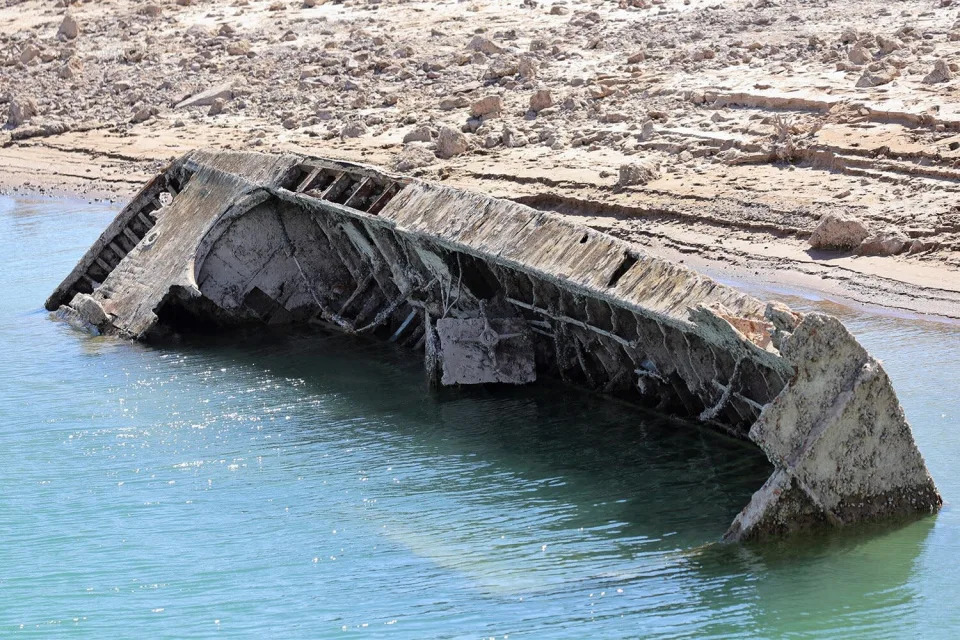


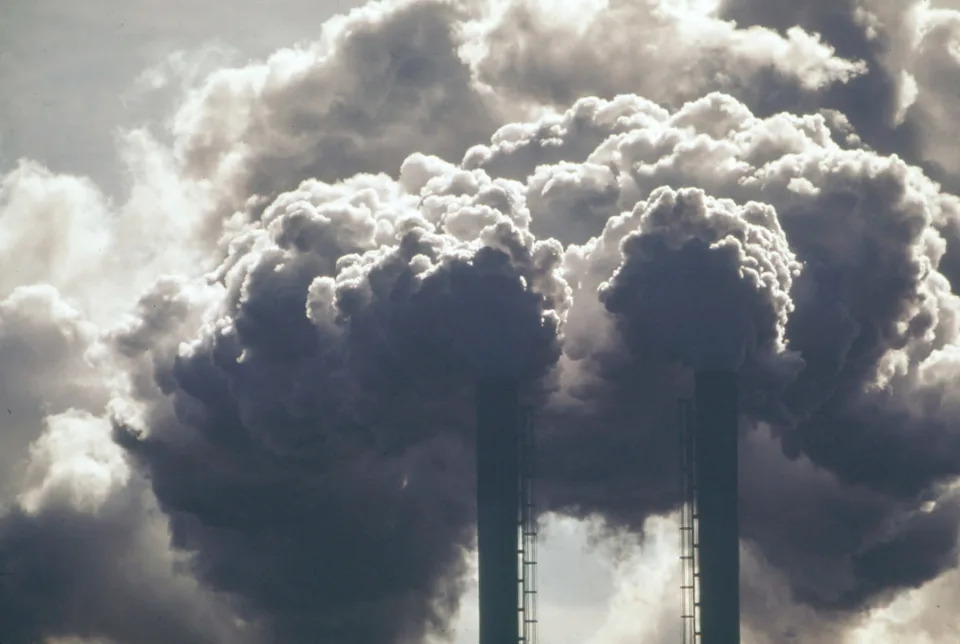


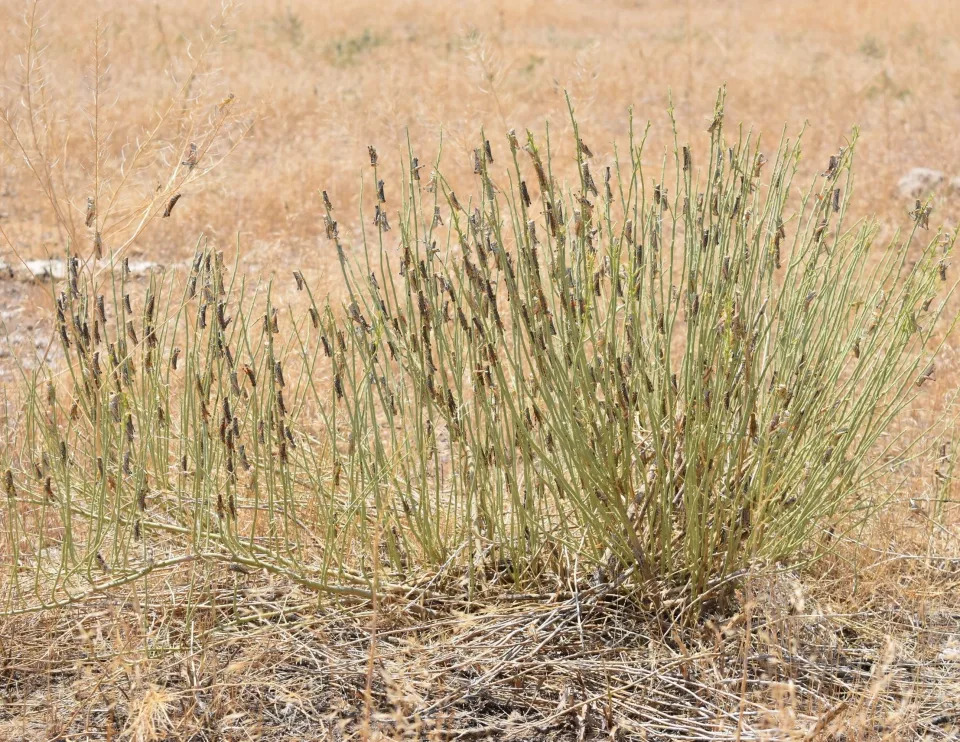

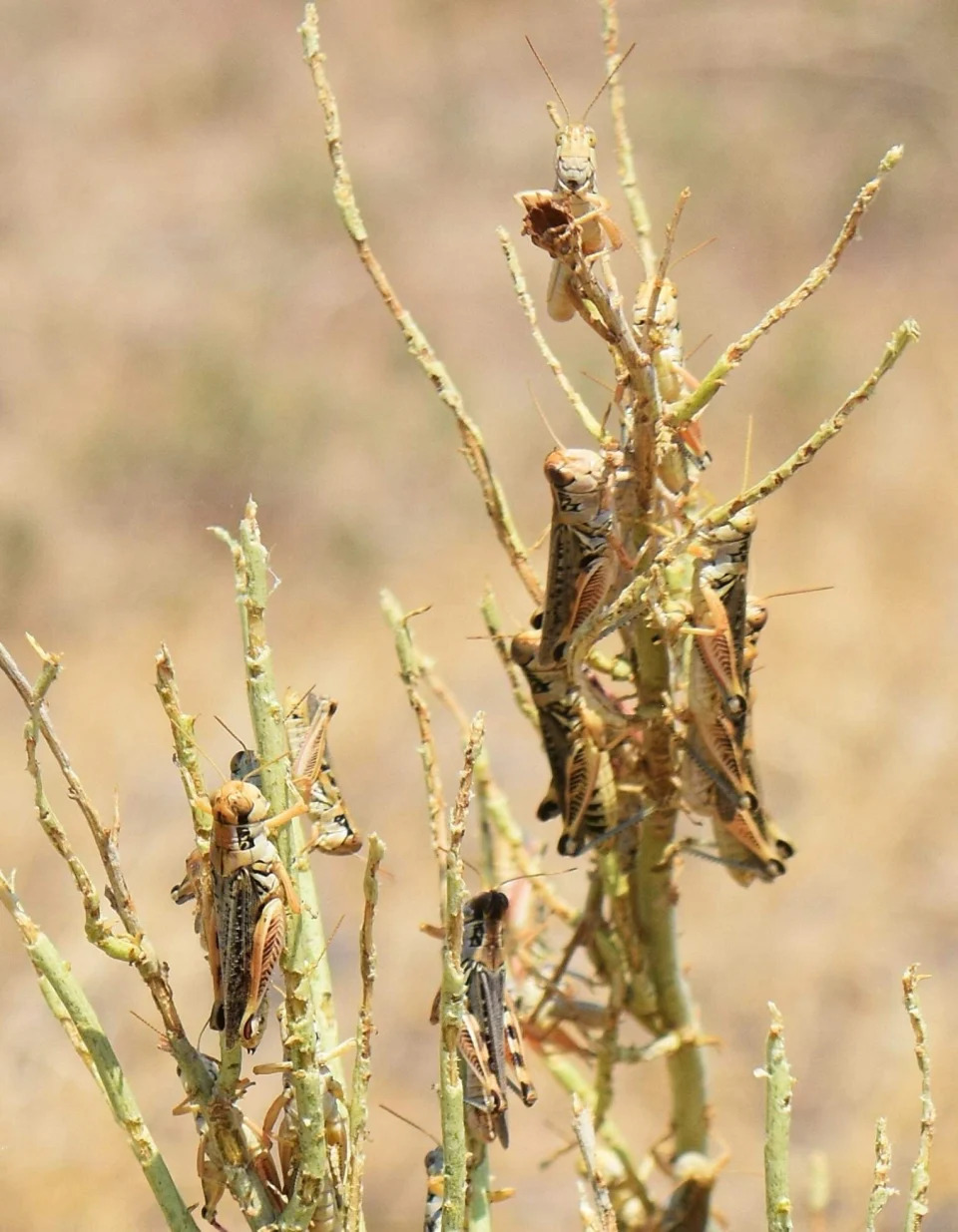




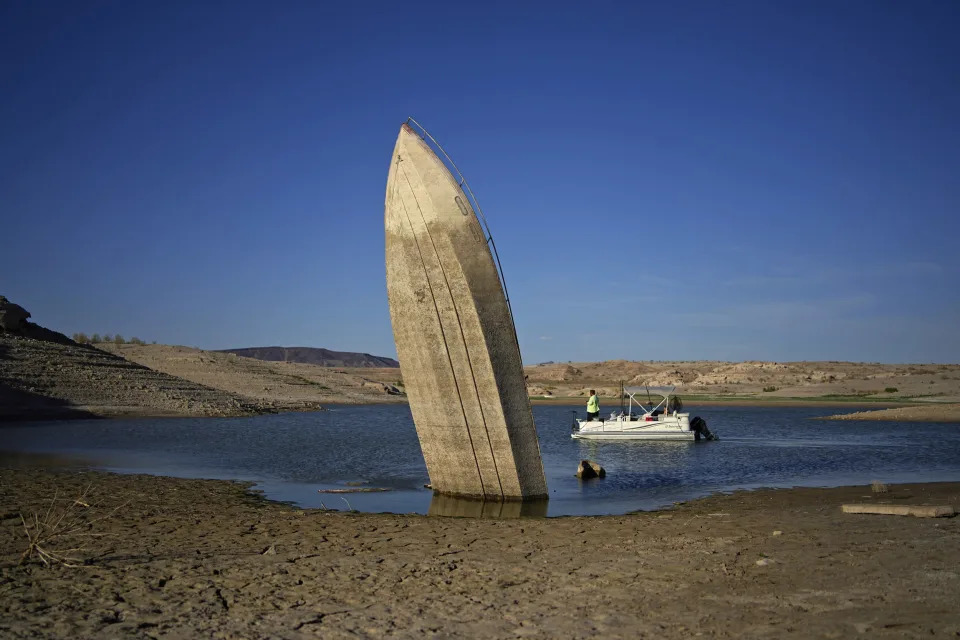
 Scroll back up to restore default view.
Scroll back up to restore default view.